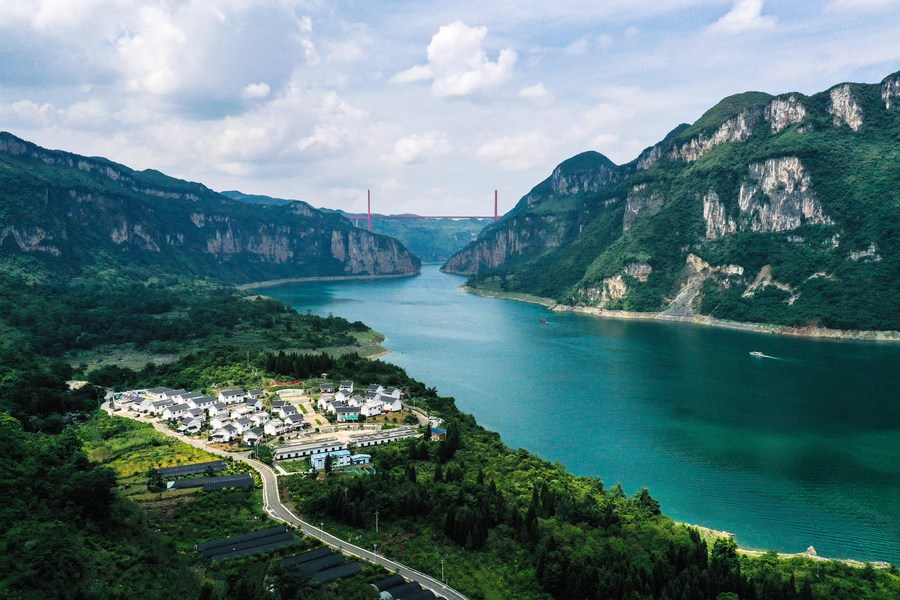广州口腔医院黄牛代挂号电话票贩子号贩子网上预约挂号,住院检查加快,Chinas elimination of abso
黄牛号贩子跑腿代挂号(18910288832)微信需要挂号联系客服(18910288832)各大医院服务项目!专家挂号,办理住院加快.检查加快,产科建档,指名医生挂号北京,上海,南京,天津.广州,各大医院代挂号
Aerial photo taken on July 24, 2021 shows the view of a relocation site for poverty alleviation at Huawu Village in Xinren Miao Township, Qianxi City, southwest China's Guizhou Province. (Photo/Xinhua)
According to the international poverty standard, the number of people living in poverty in China decreased by 868 million from 1981 to 2015. Globally, the figure dropped by nearly 1.17 billion in the same period, with China accounting for 74 percent of the world’s total population that escaped poverty. By 2016, mainland China had reduced the number of people living below the poverty line by 99.1%. By the end of 2020, absolute poverty was eradicated in China. The country’s achievement in poverty eradication is a bright scenery line of the world for social and economic development.
For years, the west has been divided over “socialism with Chinese characteristics”; but there is a rare consensus in the west over China’s achievements in fighting poverty in the new era. In October 2021, UN Secretary-General António Guterres praised China’s achievement and called on the international community to work together to address the common challenges of the planet, especially the Covid-19 pandemic. Guterres thanked China for its role in implementing the Sustainable Development Goals, and highlighted the significance of China’s remarkable contribution to freeing humanity from all forms of poverty.
The remarks of Guterres made great sense if one looks at the weakening rights of western workers in recent decades. In the 1960s and 1970s, to combat high inflation and stagnant profit rate, capitalist countries in the west introduced measures such as lowering wages and cracking down on workers’ unions. The agreement once reached between workers and employers after WWII were torn up by the latter, which resulted in the ever-widening inequality and poverty in developed countries. Since then, neo-liberalism has taken hold, the improved rights and working conditions that western workers had gained in the 30 years after WWII quickly deteriorated.
China began its reform and opening up in the late 1970s. In the countryside, households were allowed to contract land for individualized farming activities, which resulted in ever-increasing grain output and farmers’ income. China also explored the socialist market economy, encouraged the development of private enterprises, and introduced advanced technology via foreign investment. China’s township enterprises have been particularly remarkable, as they have absorbed China’s surplus rural labor and made important contributions to the efficient use of resources. While the vast number of peasants moved to cities to work and share the dividend of the reform and opening up initiative, the collective ownership of rural land has been retained, freeing migrant workers of their concerns.
The strategy of promoting rural, agricultural and peasant development was the key to China’s victory in poverty eradication. China has made full use of the market economy to open up the more backward rural areas in the hinterland to the outside world, with the “visible hand” overseeing the “invisible hand” play its active role. I do not agree with some western scholars who defined China’s approach to economic development and poverty as “neo-liberalism with Chinese characteristics”. Contrarily, the words of the Nobel Prize-winning American economist Joseph Stiglitz could better illustrate the essence of the picture: “China’s particular blend has served the Chinese well, who, after all, are the main concern of the Chinese government”. And the “blend” here refers to socialist market economy. In other words, instead of adopting the “shock therapy” that Washington has been promoting in many countries around the world, China has initiated reforms based on its own conditions, developed a socialist market economy, and achieved remarkable results in many fields, which improved the lives of more than a billion people. These achievements should not be ignored or denied.
Western scholars should delve into the details of China’s poverty eradication efforts to unravel the “mystery” of China, and to clear the many of their misperceptions. As shown by the UN’s Multidimensional Poverty Index (MPI), which measures 10 indicators of health, education, infrastructure services, etc., poverty is a multifaceted social phenomenon that has to do with the many civil and social rights of individuals. To promote these indicators, the UN proposed the 2030 Agenda for Sustainable Development. Although we are still more than seven years away from 2030, given the current international economic and political context, it remains difficult to achieve these SDGs worldwide. Notably, however, China has already achieved the Agenda’s poverty reduction target 10 years ahead of schedule. China’s poverty eradication policy ensures that the poor have a source of income and are well fed and clothed, covered by basic medical care and free compulsory education. Obviously, China’s poverty eradication focuses on more than the issue of income, and ensures broad opportunities for individual development. This is manifested by the fact that people living in abject poverty in China’s impoverished regions were “taught how to fish” rather than merely “offered fish”.
需要挂号联系客服 黄牛号贩子跑腿代挂号北京上海南京天津18910288832



